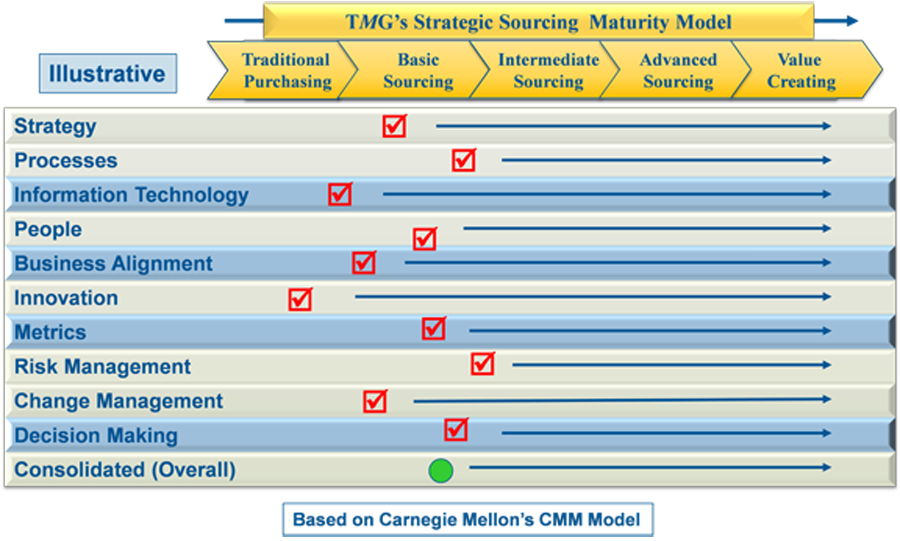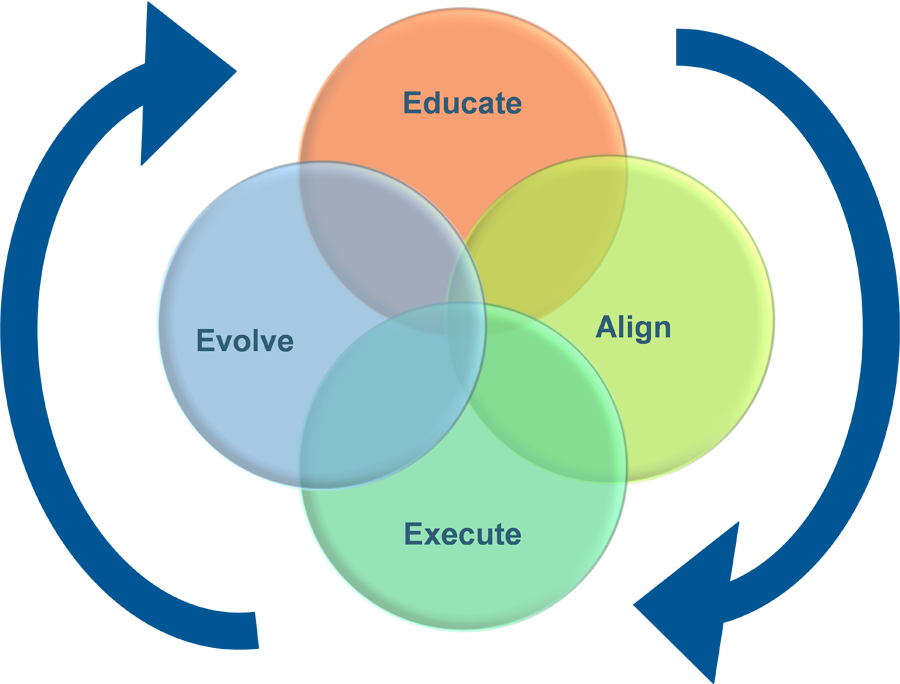Just about every functional organization (e.g. IT, HR, Finance, Procurement, Legal, Marketing, etc.) can be measured against a maturity model. The use of a maturity model allows an organization to have its processes and practices assessed against a set of external benchmarks, best practices or even next practices. Maturity is indicated by evaluating an organization across a number of domains and across a number of “maturity levels”.
Here is a sample of a Procurement / Strategic Sourcing Maturity Model:
The idea behind this model is to understand where you are today so that you can start moving your organization to the right. Why should this be of interest to you or your organization? Why do you care where you are today as long as you know where you are going? Here is why! Maturity MATTERS! Where you are today does determine the time, effort, resources and change required to get to that “Best Practice” / Value Creating level. By the way, as you start to get close as an organization, that Value Creating level will evolve as well. There are lots of consultants (present company excluded) trying to sell the latest “best practice” – years ago it was Procurement, then Strategic Sourcing, now it is Category Management. Many of them (the consultants) sell the Value Creating level to executives without explaining what it takes to get there. They also neglect to point out that you can’t move from Level 1 to Level 5 without reaching the levels in between and each level requires an investment.
As an organization, as you start to move to the right, it is not as simple as swapping out people, process and technology. The “context” under which a Value Creating organization works as compared to a Basic Sourcing organization is vastly different and requires changing more than just the Procurement/Sourcing organization itself. It requires the entire organization to think differently about the Purchasing function and this is a monumental change. For those of you who are about to make the journey, it requires the following:
Educate is required for both the Purchasing organization and the rest of the company. If you are starting at Level 2, the education process for Purchasing can be akin to teaching a basketball team how to play football. Moving to the right will require a very different skill set and therefore the people that you have today (playing basketball) may not be capable of or even want to play football. In other words, the “educate” process even within Purchasing could be significant. Then the rest of the organization needs to be educated on the change as well. ating Align may be the hardest part of the journey but also the most important. Getting everyone (the whole organization) to agree on where Purchasing is going and how to get there is no small task. Everyone needs to understand that the change will require new roles, decision making processes, skills, organization and governance structures, etc. and needs to be on board and supportive of the change. Only after educate and align are complete, should you Execute. Unfortunately many companies do not have the patience to wait, so they jump to execution and it is a disaster OR they try to skip from Level 2 to Level 5 and it is also a disaster. By the way, throwing more money or resource into the mix may help accelerate the journey but only marginally. Moving from one level to the next requires you to go thru educate, align, execute, evolve again but it does get easierJ!
Where you start does matter – so know what your level of maturity is before you begin the journey. While Level 5 should be your long term vision (remember by the time you get there it will have evolved) moving up the maturity curve in general can yield significant benefits.
Let us know what you think and join in the conversation . . . . . .


